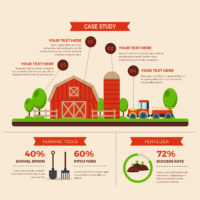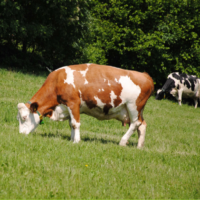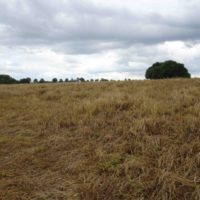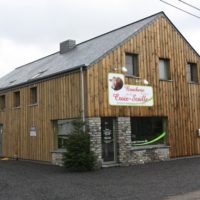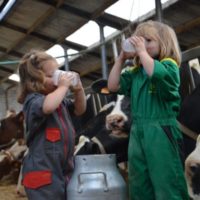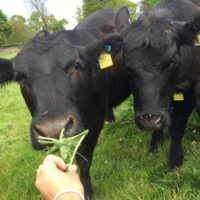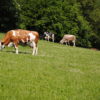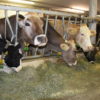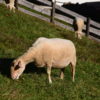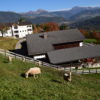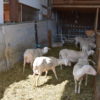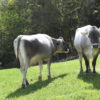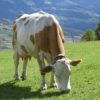Description
The innovation at a glance
Strengths
- The Professional School for Agriculture and Home Economics belongs to the Autonomous Province of Bolzano/Bozen, therefore both economic as well as didactic aims are pursued
- Well trained personnel with a large pool of knowledge
- Skilled support and consulting regarding the reduction of use of concentrates
- Cost-effective and well-planned conversion of the tie-stall into a loose housing system
- Reduced parasite infestation on pastures through mixed grazing (two grazing animal species: sheep and cows)
- Marketing of the milk as organic hay milk with a high milk price
- The strategic approach and plans for the farm are worked out by a group of five teachers (Hofgruppe)
Prerequisites/weaknesses
- High motivation, own conviction of the meaningfulness of concentrate reduction in the ration
- Availability of grassland areas suitable for grazing and mowing (enough contiguous areas located close to the farm buildings, moderate steepness)
- Animal breeds suitable for grazing in mountain environment and able to cover their energy needs through grazing, hay and a maximum amount of 450 kg cereals per cow per lactation
- High forage quality through:
- Possibility of high cutting frequency (suitable climate and botanical com position of the plant stand)
- Effective barn drying method combined with air heating and dehumidifier
- Availability of two milking parlours and stables for two animal species
- The collaboration of two annual work units (AWU) is necessary
A deeper insight
Economic factors
Prerequisites/weaknesses
- Willingness to keep two animal species (sheep and cattle) and to process their milk
- A sales market for the organically produced hay milk as well as for the other products processed on farm (cheese, yogurt) should be established
- The product quality and the environmentally sound management must be economically acknowledged by the consumers
- Enough contiguous grassland areas located around the farm and suitable for grazing should be available; the lease of grassland areas could be necessary
- Handling the short sward grazing system should be trained (through measuring of the sward height); a regular inspection of the grassland areas as well as a promptly reaction to the weather conditions during the growing season is necessary
- Effective barn drying method with warm-ventilation and dehumidifier are necessary to ensure the achievement of a high forage quality; furthermore, sufficient storage capacity for hay or hay bales is needed
- Investments must be planned on a long-term basis, because the financing must be approved by the public domain and the approval time is very long
- The milk must be collected from the farm every day and brought to the dairy plant; the farm pays part of the transport costs, which are subsidised from the dairy plant and the local administration
- It’s not possible to evaluate the farm economically, because of the lack of economic surveys and the entanglement of production and didactic duties
Strengths
- The demand for the products manufactured on farm is given
- The price for the organic hay milk is high at the moment
- Flexible allocation of the employees during workload peaks on the farm as well as for didactic needs
- Greater independence from off-farm fodder purchase, particularly from the price fluctuation of concentrates
- Financial support from the public domain for the delivery of the milk
Social factors
Prerequisites/weaknesses
- Personal conviction concerning the sustainable management and the reduction of concentrates
- Professional competence, motivation as well as willingness for continuous training should exist
Strengths
- Employees are aware of their role to train and support future farmers; they try to assume a visionary thinking, even if this is often questioned by other farmers
- The interest of farmers and customers in organic farming as well as in organic products is increasing
- The grazing management satisfies the landscape scenery cows on the pasture, which is increasingly demanded by the public opinion
- Decisions are taken within the farm team; most teachers support them; joint decisions and the development of concepts as a team are perceived by the team members as a strength
Environmental factors
Prerequisites/weaknesses
- The management of grassland must be coherent with the livestock kept at the farm; this requires good planning of grazing and mowing, but also a certain flexibility in response to the weather conditions
- The combination of mowing and grazing has a positive effect on the plant stand
- Availability of expert advice regarding the reduction of concentrates in the ration to avoid an energetic undersupply of the animals
- In case of an undersupply in energy feeding of off-farm, energy-rich, organic fodder (i.e. maiscobs) might be necessary, but not easily retrievable on the market in organic quality
Strengths
- The cattle are fed with forage which is not withdrawing arable land in developing countries, which would be suitable for food production (feed no food)
- Reduced parasite infection trough mixed grazing
- Minimize interventions on animals (horned cattle are targeted in future)
Technological factors
Prerequisites/weaknesses
- Availability of 2 milking parlours for 2 animal species (cattle and sheep)
- High forage quality through an effective barn drying method combined with air heating and dehumidifier
- Targeted use of overseeding at the beginning of the growing season to strengthen the sward
- Inter-farm usage of the bailing press (machine-ring- association for shared usage of agricultural machines)
Strengths
- Availability of a well-equipped machinery park
- Energy costs for the barn drying method combined with air heating and dehumidifier are paid from the public domain
- Cost-effective conversion of a tie-stall into a loose housing system
Legal factors
Prerequisites/weaknesses
- Perfoming at least one cut per year on all grassland areas is necessary to get payments on behalf of the EU (Measure 11 Organic farming of the Rural Development Plan)
Political factors
Prerequisites/weaknesses
- Simplified procedures for the conversion of grassland areas is desired (objective: extension of the grassland area at the cost of woodland)
What the innovator says about his innovation
Would you do it again?
Yes, I would do it again, because I’m convinced that grazing is species-appropriate for sheep and cattle.
What would you do differently?
I would pursue a slower reduction of concentrates in the ration, in order to learn from my own experience. The reduction of concentrates represents a big change for the animals, and should be gradually implemented.
Would there be enough market available in your village for three other farmers implementing your innovation?
Yes, potential is given and should be exploited. The Professional School of Agriculture and Home Economics would like to set a good example.

